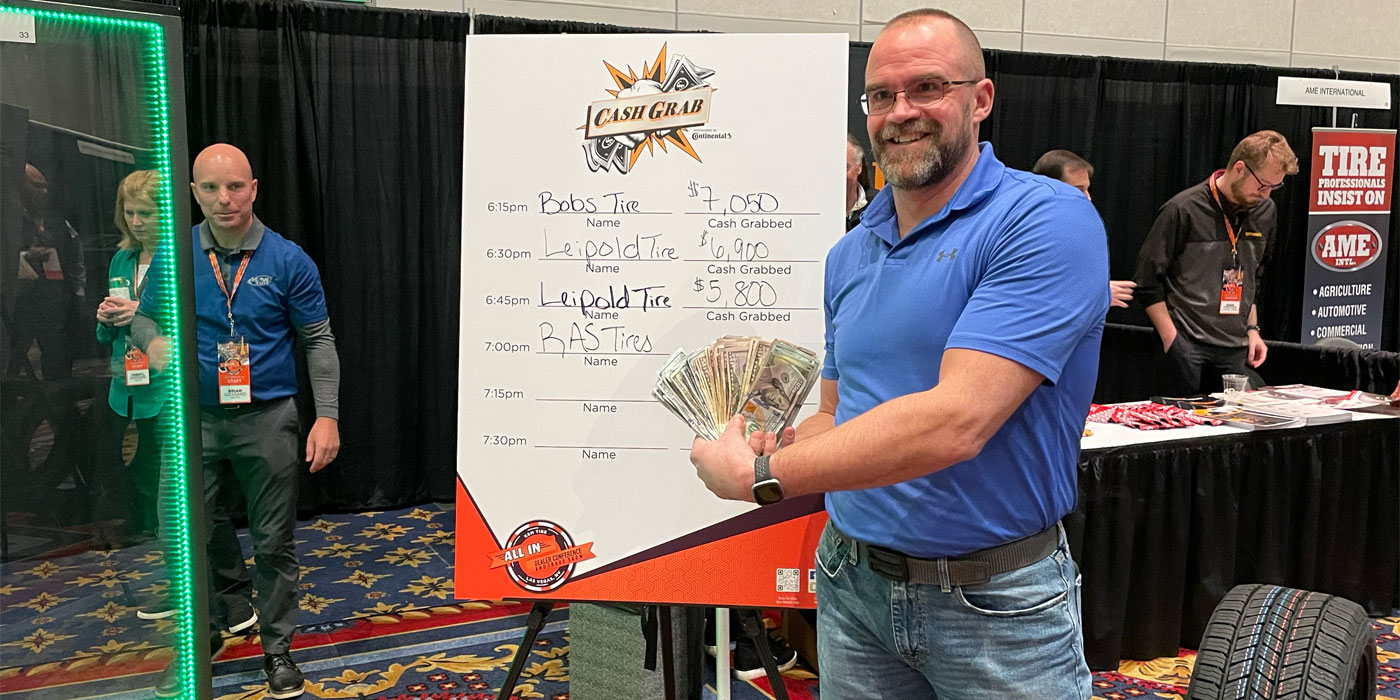Make or Break
Smart Pricing Strategy Can Keep You Humming Long-Term
How important is pricing to retailing success and how tricky is it? Answers: Very and very.
The evidence rests with the story of two retailing giants – Wal-Mart and Sears. Wal-Mart built its success on "everyday low prices" rather than sales, and now is the nation’s largest retailer. Sears, once the mass merchant retail king, has fallen from first to third. Sears went from a price-based strategy, built on its century-old catalog, to big sales. Then, for just a few months, Sears went to storewide everyday low prices, finally retreating to periodic sales events.
Unlike Sears, which is surviving despite horrendous losses in its pricing strategy nightmares, the independent tire dealer cannot afford to change directions several times, perhaps not even once. Pricing must fit the dealer’s image now and in the future, focusing on both the customer and the situation.
Tips From Experts
What to price your merchandise and how you arrive at those figures and profit margins are two of the biggest questions facing any retailer – regardless of the goods they sell. In terms of business considerations, they are probably second only to how to build store traffic.
Here are what the experts and their surveys say.
- Profit must remain your primary consideration in pricing. This doesn’t mean that you have to meet a standard margin on every item, but it does require factoring in all your costs so you aren’t fooling yourself. Into every price, you must consider not just cost of the item but also your cost of doing business. Don’t give away the store to make the sale.
- Price to match your image. Consider your business image when you establish your pricing strategy. If your market is the upscale customer, then don’t become a no-holds-barred discounter. Like oil and water, quality and deep discounts simply don’t mix.
- You must meet the competition’s pricing with something equally as attractive. For many retailers this means matching prices. Others avoid that danger – and better gear themselves for long-term success – by focusing instead on the service/quality image.
- Be selective in your pricing. If you match or, as some independents now advertise, beat the discounters’ prices, you surely can’t do it on everything unless you buy as well as the country’s biggest chains. So decide where the price battleground will be – probably at the low end of each product range.
- Shop your competition regularly. Don’t just read their ads, but visit their stores. Or at least make some phone calls. Find out what the competitive situation is – prices, sales help, service, warranty, customer acceptance, etc. Then you can determine what your advantages are and promote them as a defense against predatory pricing.
- Be aggressive and imaginative. Consider displaying competitors’ price ads in your store next to yours, showing how yours are better after adding in your extra value, such as warranties, premiums, customer pick-up, or any other special service you offer. Whatever you can use to differentiate yourself from both the big boys and the competition down the street.
- Stress your reputation, your service and your hometown identification – one tire retailer advertises: "We have our roots here, not just our branches."
- Appeal for help from your suppliers. Increasingly, some suppliers are insisting on a minimum advertised price from their retailers, cutting off co-op funds to those whose advertising undercuts their MAP. Some also will rebate on a dealer’s inventory whenever they reduce a buying price. This is a somewhat controversial subject among tire dealers, but it is one way that some are using to try and level the playing field.
- Study pricing guides available from a variety of sources, ranging from your trade association to the Small Business Administration to commercial sources. These will tell you what the average industry margins are, the most attractive price points, and even consumer price attitudes.
- Be innovative with your pricing. While multiple pricing, such as second-one-free or a reduced price for a second, may not work in your store, "bundling" certainly might.
- Adopt a variable pricing method. Rather than simply using costs to determine prices, consider consumer buying and shopping habits, seasonal timing, competitive practices, etc. And vary your price endings. Prices ending in 5, 8 or 9 usually have the most appeal. Even big-ticket items can benefit from this practice; look at some of today’s home prices – $109,900 sells faster than $110,000.
- Always get full margin on items that are difficult to price compare – merchandise that is distinctive because of your customizing or that is part of a tie-in deal or that is not normally available in your market. Never hesitate to charge more for goods that require special service or installation. Even the most voracious sales customer understands that you never get more than you pay for.
- Price lining also should be part of your merchandising strategy. This requires grouping various selections of an item into just a few price points rather than confusing the customer with say eight price ranges for a single item. Keep it simple.
- Competition sets many prices in the marketplace. So, you must shop the competition. However, this is not the primary factor in pricing. Among small general retailers surveyed, only 21% said they set price relative to what competitors charge. Forty-one percent said they set prices to cover cost and make a fair profit, and 30% reported charging "what the market will bear."
- Finally, be flexible in your pricing. Remember the many small jewelers that once inhabited towns across America? They pioneered the "keystone" concept in pricing – doubling their cost in setting a price. Their 50% margin was inviolable, and they died by that concept.
Bundling a Seven-Year Warranty
One enterprising appliance dealer ringing up $4.5 million in his two stores avoids the lowest price syndrome by bundling in a "free" seven-year warranty on every appliance sale. Then he adds this "$189 value" onto the competitor’s price to show that his price is lowest.
He gets this point across dramatically by posting competitor ads right alongside his. The warranty would cost the dealer about 3% of sales, but he raises his price almost that full amount. This enterprising retailer actually comes out ahead by charging a one-time maintenance deductible of $34.50 after the first year.
You must move with the times and with pricing strategy changes. While not matching the lowest prices in town, you must always offer something better. And there’s nothing more important than strategic pricing.
Sure it’s profits that make up the bottom line, but the bottom begins at the top with the rightpricing practices.
John Rogers is an editor, a regular writer for business magazines, and has authored two frequently reprinted books: Store Planning and Store Operations. His monthly column – Business Sense – appears in Tire Review.













